With a Dalit news platform readying to close due to lack of funds, those reporting on the marginalised and poor explain why stories about caste-discrimination, hunger, poverty and disease hinge on survival of minority-led media
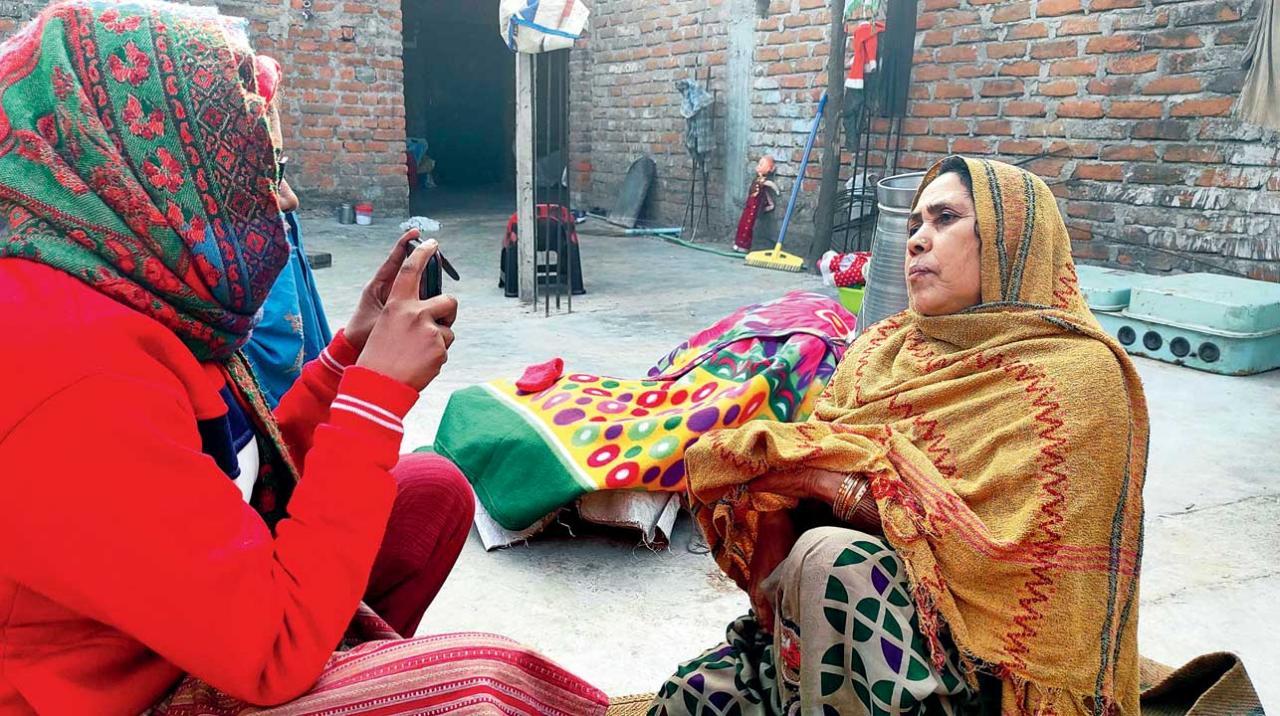
ASHA worker Rajrani talks about her work with feminist journalist Monika Anivarti in village Lodhwara, Chitrakoot
For years, the women of Chitrakoot, a tiny district in Uttar Pradesh, have been nursing a movement of sorts. In the pandemic, there was an urgency to give that movement a voice. Feminist and Dalit journalist Meera Jatav tells mid-day in Hindi over a telephone call that the COVID-induced lockdowns had come down heavily on rural women, who worked as daily wage labourers and farmers. “Many of them lost their jobs and sources of incomes. The pressures and demands had doubled on the home front, and the violence against them too.”
ADVERTISEMENT
As founder-editor of the path-breaking newspaper Khabar Lahariya, which inspired the Oscar-nominated documentary Writing with Fire, Bundelkhand-based Jatav had worked tirelessly for nearly two decades to put the stories of womenfolk at the forefront. But in 2020, as the country’s poor grappled with disease, death and joblessness, she felt there was a need to amplify the struggles of these women. She launched Chitrakoot Collective, along with former Khabar Lahariya colleague Priyanka Kotamraju. “We wanted to document the story of every working woman in Chitrakoot,” says Kotamraju. Jatav adds, “Some of them had risen to the occasion and started to distribute food and even masks. There were others who launched support groups. It was important to celebrate their lives and work.”
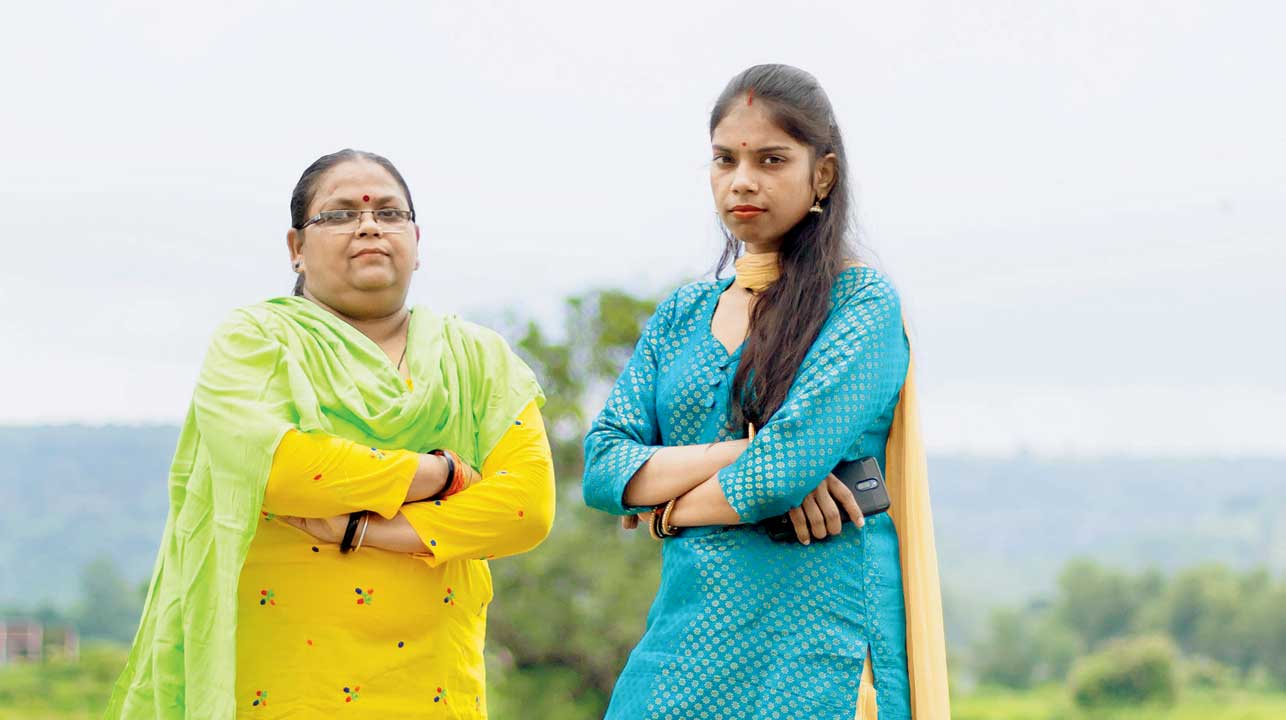 Chitrakoot Collective founder Meera Jatav and journalist Anivarti at Ganesh Bagh, Chitrakoot district
Chitrakoot Collective founder Meera Jatav and journalist Anivarti at Ganesh Bagh, Chitrakoot district
The district, which previously birthed the Dalit-first and women-led Khabar Lahariya, became the kernel of their storytelling. While they have a humble following of 580 on Instagram, the 670-odd posts cover a gamut of experiences that mainstream media would have otherwise ignored. There’s the account of Manju aka Mayawati, a Dalit women from Kolkata, who along with her rickshaw-driver husband and children settled in Chitrakoot. Manju is a ragpicker. “On noticing Manju walk with a sack of waste items, children and the elderly in the locality would call her names. Someone would say she is crazy, or a thief. During the pandemic, these instances increased,” a caption in Hindi with Manju’s photograph, reads on Chitrakoot Collective’s Instagram page, “Her husband had stopped driving the rickshaw, so all the responsibility of running the home fell on her shoulders. Manju continued doing her work. Every day, when she would leave with her sack, people would mistake her for a robber, and say ‘you are taking these things away without asking’. There were people who’d offer Manju money, and say, ‘spend time with me’. I would get angry and abuse them, says Manju.” Stories like these, say the founders, helped them also understand the agency these women had.
Kotamraju, who is currently pursuing a PhD programme, says that Jatav’s experience with Khabar Lahariya gave her the head-start with Chitrakoot Collective. “Running an independent and minority-led or identity-based media house comes with its own sets of challenges,” says Kotamraju. “Even if you manage to start one, sustaining it is hard, because sources of funding are few and far between. It can get difficult running it [the media house] on subscriptions alone,” she adds.
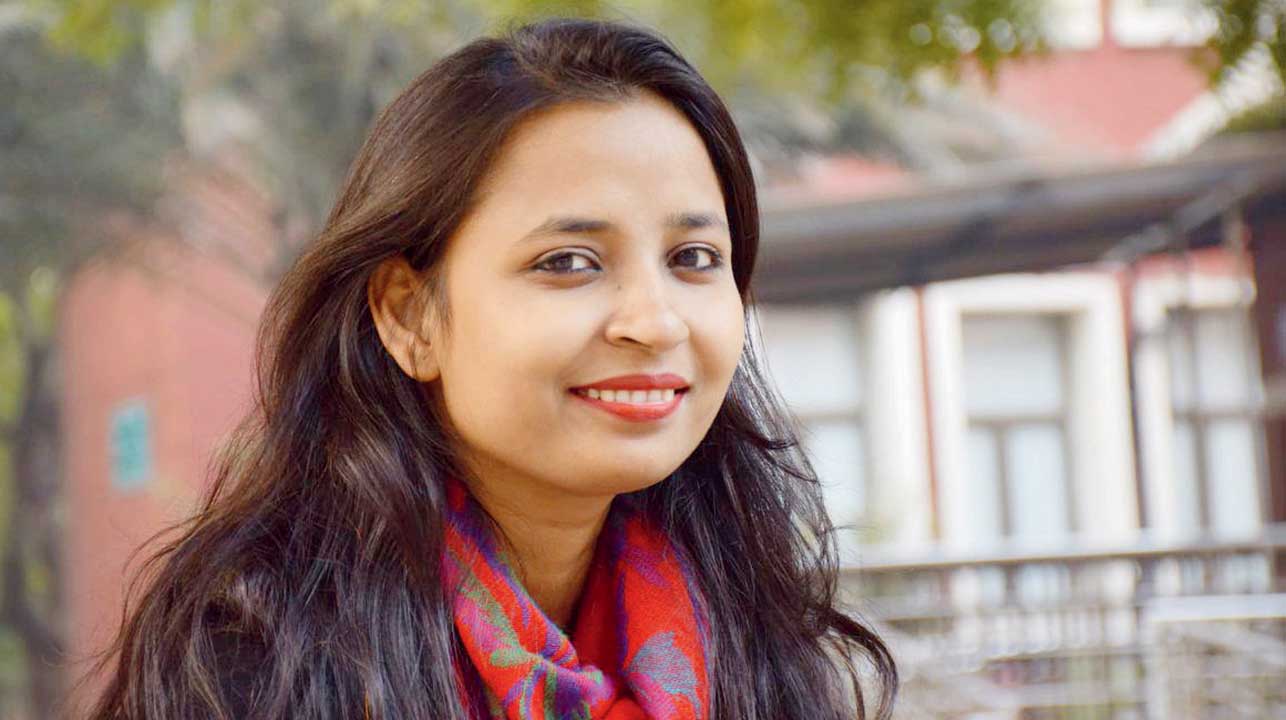 Meena Kotwal launched The Mooknayak, a media and news company dedicated to reporting about the marginalised, after she faced discrimination at the hands of her former employer
Meena Kotwal launched The Mooknayak, a media and news company dedicated to reporting about the marginalised, after she faced discrimination at the hands of her former employer
Last week, Dalit Desk, a media house dedicated to uplifting and amplifying voices of Dalit people, headed by Sahil Valmiki, announced that it was shutting down operations because they were “unable to secure necessary funding” to continue their work. A few days on, following contributions from supporters, they were able to resume work. They aren’t sure for how long, though.
“We need to be heard,” says Dr Raees Mohammed, founder of news website and YouTube channel Dalit Camera, which captures narratives, public meetings, songs, talks and discussions involving Dalits. The existence of casteism in Indian media makes it all the more problematic, he says. A study conducted by Oxfam India and Newslaundry, titled Who Tells Our Stories Matters: Representation of Marginalised Caste Groups in Indian Media, between April 2021 and March 2022, revealed that 88 per cent of the top leadership positions in Indian media—including print, television and digital platforms—were held by people from the general category. In print media, less than five per cent of the articles were written by people from the Scheduled Caste/Scheduled Tribe communities and 10 per cent belonged to Other Backward Classes. This also influences the kind of narratives that emerge, feels Mohammed.
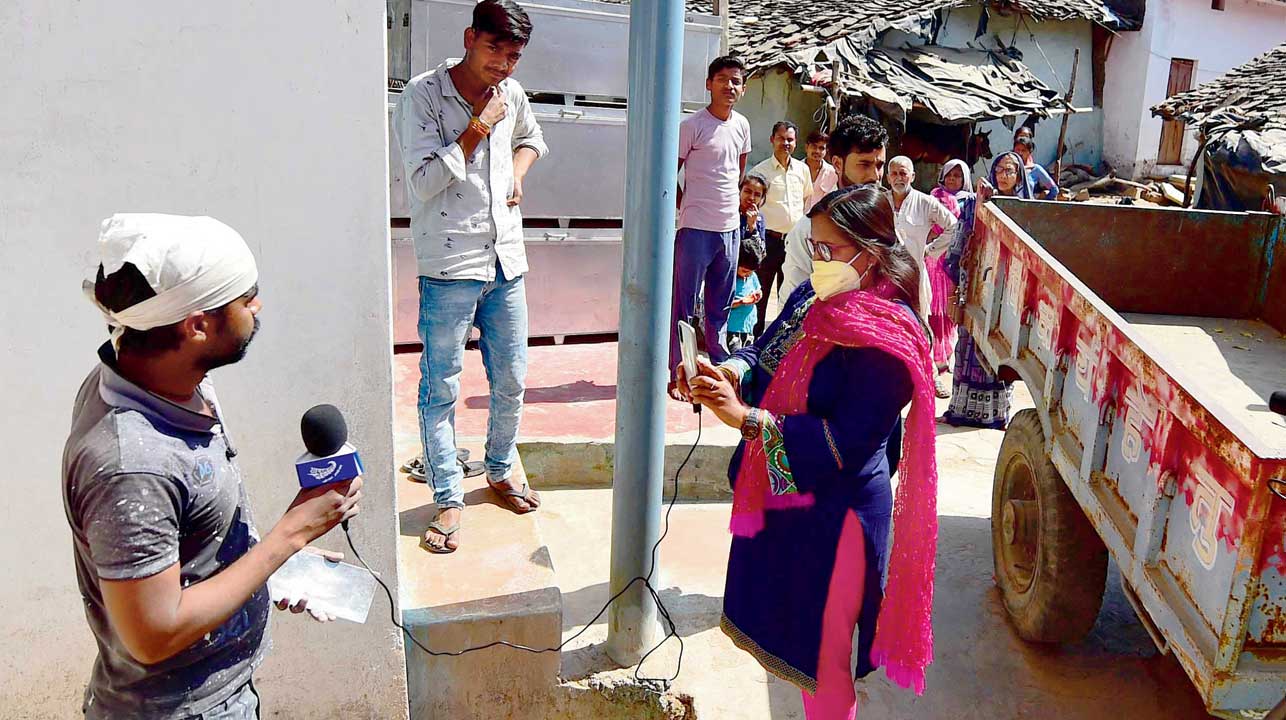
In this picture taken on March 11, 2022, Geeta Devi (right), senior journalist of Khabar Lahariya, interviews a man while reporting in Banda district, Uttar Pradesh state. PPic/Getty Images
Mohammed remembers an incident from 10 years ago, when a BR Ambedkar statue was desecrated in Hyderabad. “Hardly any news media covered it. The only issue that the media kept raking up was reservations... I didn’t feel represented,” he says.
Having worked as a light boy for a company that did marriage shoots, he had some experience in video recording. “I also knew the importance of archiving important events, something which the Dalit movement in general lacked,” he shares over a telephonic call.
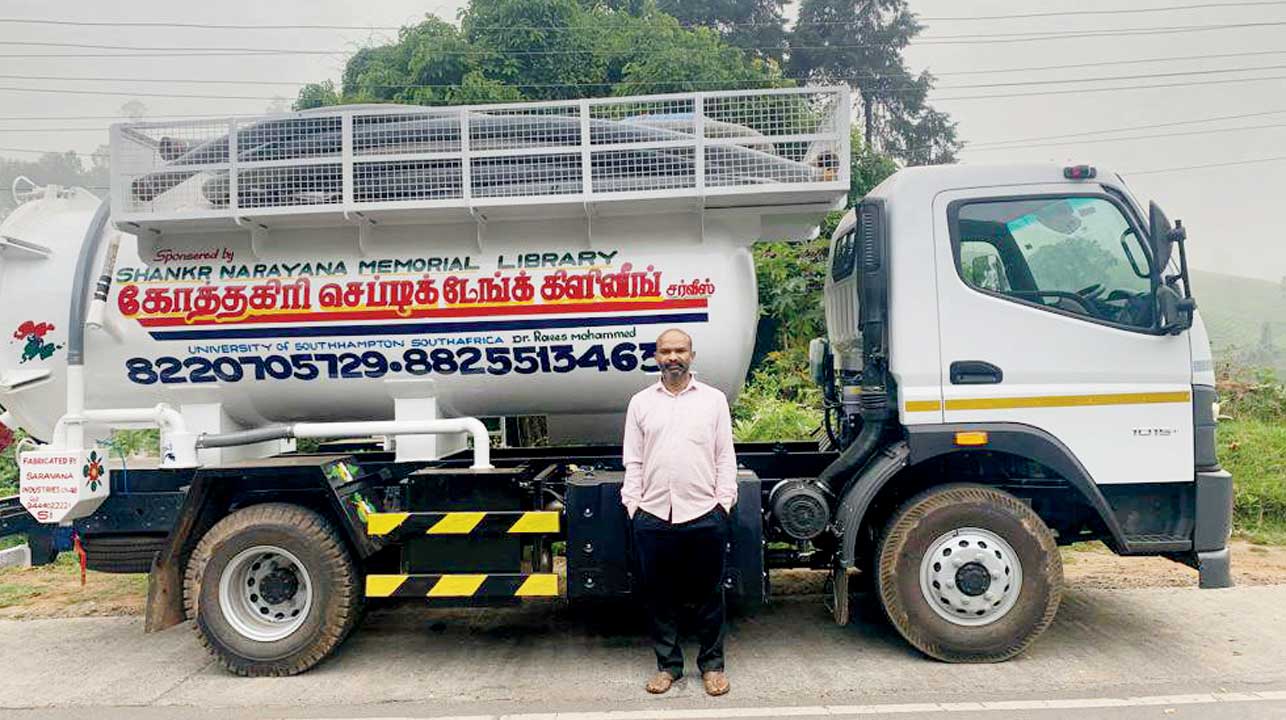 Dr Raees Mohammed, founder of Dalit Camera, now runs a sanitation business in Ooty. Reporting on the marginialised needs fresh perspective, he feels
Dr Raees Mohammed, founder of Dalit Camera, now runs a sanitation business in Ooty. Reporting on the marginialised needs fresh perspective, he feels
Dalit Camera thus, began as an online archive with Mohammed recording videos on a digital point and shoot Panasonic camera, and uploading them on YouTube. “I would cover all the major Dalit movements and protests taking place in Andhra Pradesh... I felt there was a need to record the activism that was taking place around me. This had a major impact on the movement too,” says Mohammed, who at the time was pursuing an M Phil and doctorate.
What Mohammed had was a vision. “But I had no funds to support this dream,” he confesses. The son of sanitation workers, he had to dip into his fellowship funds and also rely on the goodwill of others, to sponsor his train or bus tickets to travel to the site where an agitation was on. “Sometimes, I wouldn’t have money for food. I didn’t have a change of clothes either. People would notice me wearing the same T-shirt for every event. It was a difficult time,” he recalls, adding, that he slowly built a network of volunteers through the student community, who would document Dalit protests across the state, and country. “We were covering movements tirelessly and relentlessly,” he says, adding, “Right now, if someone writes the history of the Dalit movement in Andhra Pradesh, they would not be able to evade Dalit Camera. Their research will somehow take them back to our archive.” Dalit Camera has over 3,000 videos on its YouTube—there are 390-plus videos alone on the protests that took place post the suicide of Rohith Vemula, an Indian PhD scholar at the University of Hyderabad, in 2016. “What we did was report from the ground. Until then, the visual representation of Dalits was minimal, especially in the online space. We created raw footage that gave you a window into the lives of the Dalit community. Our content, I feel, did not reflect any bias towards a particular community. If you wanted access to videos that praised the Dalits, you’d find it here... you would also find videos that attacked them.”
Mohammed recently quit his job as a professor, to start a sanitation business in Ooty, where the focus is the health, safety and dignity of sanitation workers. “I currently upload videos related to rights of sanitation workers who are engaged for septic tank cleaning work. But when I have the time and financial bandwidth, I am hoping to revive Dalit Camera in a big way.” “I think there’s a need to reassess how we look at Dalit issues,” says Mohammed. “There is something lacking, and I can’t put my finger on it yet. But I feel the content is repetitive. We are covering one protest after the other, but there’s no purpose to it... nothing seems to be changing. The atrocities committed against the Dalits in the 1980s, continue to this day.”
Over the last few years, and partly due to the growing consumption of social media, there has been a spurt in platforms dedicated to reporting about the unprivileged.
Only recently, Delhi-based broadcast journalist Meena Kotwal, 33, launched The Mooknayak: Voice of the Voiceless, named after a bi-weekly newspaper founded by social reformist Dr BR Ambedkar. Kotwal, born to manual labourers, allegedly faced discrimination and public humiliation at the hands of her former employer. After losing her job, she decided to focus on telling the stories of the marginalised. According to The New York Times, The Mooknayak draws nearly 50,000 unique visitors a month to its website. The company runs on crowdfunding and small donations. Ever since its launch, it has received “more than $12,000 from Google and roughly $6,000 as part of a training program led by YouTube, which helped fund salaries for a team of 11”.
Kotamraju of Chitrakoot Collective says in the current social and political environment, it is important that Dalits are given a platform to be heard. “There’s a woman in our collective, who was recently awarded a major fellowship grant for her reportage on hunger and starvation in Bundelkhand. She began reporting on the issue in December 2021, and continued to cover it over the next few months. Her reportage highlighted how women from marginalised groups were badly hit, especially during the pandemic, and touched upon starvation deaths and the malnutrition crisis. It’s been two years, and it hasn’t been published by any publication till date,” says Kotamraju. “To make it worse, the Indian government has rejected the Global Hunger Index Report 2022 [it ranked the country 107 among 121 nations], claiming that it is biased and suffers from serious methodological issues. Right to Food activists and journalists like her, who are reporting on ground know the truth, but there is no place to tell these stories. Where do we go then?” she asks, adding, “This not only leaves the reporter disillusioned, but even the people they write about. There is a serious disenchantment among many, who feel they are being silenced. This is not even a political issue. It’s a basic right to life.”
During her Khabar Lahariya reporting days in 2003, Jatav remembers how an Adivasi woman in Manikpur was assaulted by the police, on charges of extending support to local dacoits. “No media bothered to report about it,” she says, adding that Khabar Lahariya decided to pursue to story, highlighting the torture. “When the story was on our Page 1, we were threatened, abused and taunted. Many questioned our abilities as women; they said, ‘how dare you take on the authorities’!”. But Jatav persisted, following up on the story, until the superintendent of police visited the village and apologised to the women. “The challenges remain, but we are defiant. We will continue to tell these stories.”
390
No. of videos uploaded by Dalit Camera on its YouTube on the protests that took place post Rohith Vemula’s suicide
Also Read: Will Maharashtra lead the competition of pig farming in India?
 Subscribe today by clicking the link and stay updated with the latest news!" Click here!
Subscribe today by clicking the link and stay updated with the latest news!" Click here!







